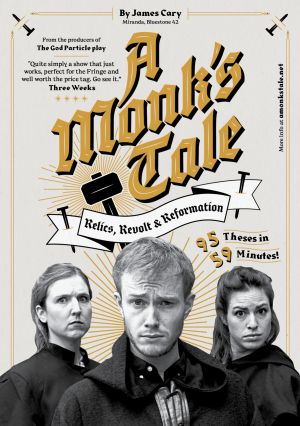Should I care about Martin Luther's 95 Theses?
When most of the world's famous documents were signed, sealed or delivered, it was appreciated at the time that it was probably a special moment in history. In 1215, the people of Runnymede must have thought the humiliation of King John at the signing of Magna Carta was a big deal. Likewise, the American Declaration of Independence began a new country there and then.
Martin Luther's Ninety-Five Theses does not fit into this category. This document is the theological equivalent of Fleming's accidental discovery of penicillin. Fleming didn't set out to become the father of antibiotics, and irreversibly alter the lives of millions of people, but that is what happened. Likewise, Luther set in motion of a chain of events that would have a profound influence on human civilisation.

At first glance, Luther's moment in 1517 seems very dramatic. A humble monk stomps up to the doors of the Castle Church in Wittenberg, stuffed with holy relics, on All Hallows Eve and bangs his 95 Theses to the door. High drama. But, as one of the characters points out in my comedy, A Monk's Tale, Luther used hammer and nails because it was 1517 and Blu-tack hadn't been invented yet. Moreover, a church door in a University town was a message board. People would put up posts and others would respond. Sound familiar?
Granted, the 95 Theses sounds like a Buzzfeed list that needs a judicious edit, but it is not a particularly long document. You could read it in aloud in less than twenty minutes. If you did, you may be a little mystified. So what is it about?
I will tell you, but I have to warn you that studying the contents of the 95 Theses tells you as much about the Reformation as the contents of Gavrilo Princip's Browning pistol tells you about the First World War. In a sense, Martin Luther fired the first shots of a war that no-one realised had started.
So. What is Martin Luther saying in his 95 Theses? He is objecting to the false promises of a Friar called Johan Tetzel who is selling Certificates of Indulgence. The theory is that when Christians die, they go to Purgatory to be purged of their sins before heaven. The purchasing of a Certificate of Indulgence was essentially afterlife insurance, or a get out of Purgatory free card. And the money raised was helping fund a new St Peter's Basilica in Rome. And paying off the debts of the Archbishop of Mainz, who bought the position by borrowing money. Seriously.
Now, Protestants would later argue that there's no such thing as Purgatory, that Christ's death on the cross provides full pardon for sins and that Christians go straight to heaven. They might also argue that buying Archbishoprics is bad form, and even the Catholics would've agreed once they'd cleaned up their act in the Counter-Reformation.
Luther didn't say any of this in his 95 Theses, which is a little surprising. Nor does he lambast superstitious relics or proclaim that the Christian is justified by faith alone through grace. That comes later. In 1517, Luther is still grappling with lots of theological issues in private. But in his more public theses, Luther suggests that these Certificates of Indulgence were improper, that the Pope didn't have the authority to grant pardon for sins and that he could probably pay for St Peter's Basilica out of his own vast pocket.

This did not go down well in Rome. But it was not until 1520 that Pope Leo X (no relation to Malcom X) issued a letter or 'Papal Bull' known as Exsurge Domine in which His Holiness demanded that Luther retract 41 of his 95 Theses within sixty days or face excommunication. It is not clear if Luther could settle it early like a parking fine and retract 20 theses in thirty days. He was not in the mood to compromise and by 1520, he was already much more developed and defiant in his theology.
Luther showed this on December 10, 1520, when he demonstrated exactly what he thought of the pope's envoy, and the horse he rode in on. Luther took a copy of the Pope's Exsurge Domine, with its threats of excommunication and the fires of hell, and publicly burned it. Now that's a dramatic event right there.
Another came the year later at the always-amusingly-entitled Diet of Worms, in which Luther stood his ground before Charles V, the Holy Roman Emperor, easily the most powerful man in the world. It was there that he truly nailed his colours to the mast. But history has latched onto those Theses. And that document is what we celebrate five hundred years on in 2017.
James Cary has written 'A Monks Tale: Relics, Revolt and Reformation', a comedy of sketches and songs about Martin Luther's 95 Theses. It previews in London from June 26 and at the Keswick Convention before a run at the Edinburgh Fringe from August 5-23.











